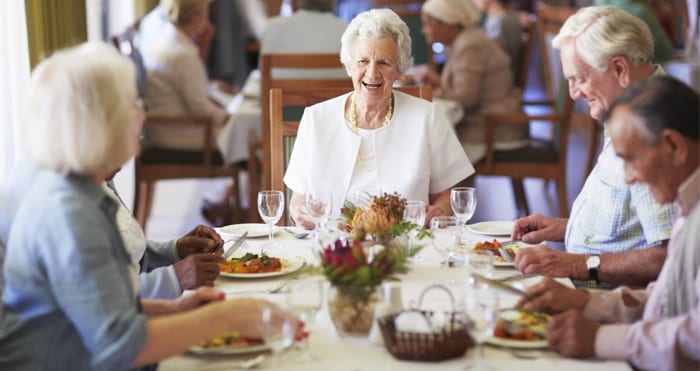
When I visit residential aged care facilities, it doesn’t take long to get the feel for a place, as I have mentioned before here and here. The same is true in the dining room – it is often reflective of the organisational culture. Interestingly, dining rooms can have their own sub-culture and differ between dining rooms even within the same facility.
Our starting point when reviewing a facility’s meal service is to sit and eat with residents in the dining rooms for up to a week. I get to see things from their perspective and immerse in their dining room culture. For some residents, meal time is a task – come, eat, leave. There is little conversation, little interaction with staff, rare immersion in eye-popping colourful, gorgeously presented meals with mouth-watering smells and descriptors.
What do the residents actually want, and what do management imagine they are actually providing?
What residents want: Consistently hot, tasty, nicely presented favourites that are not murdered by overcooking in a dining room that is a place to look forward to with pleasant company, comfortable surrounds and they leave feeling contented.
What management provide: white linen tablecloth, white china, printed menu, table adornment, matching tables and chairs, consistent seating, regular mealtimes, nutritional dietitian-approved menu, non-break crockery, supervision by care staff, food brought to the dining room for serving en masse.
Do you feel like you haven’t quite nailed the dining experience? A great starting point is to clarify what vision and culture the management would like. This is not something to be foisted upon staff and residents, with a vision statement and flowery words on the website. No, it is the heartbeat of the place and should be the pulse of the board and management. Culture is like water – it flows to the lowest point. It is difficult to contain and can seep through the cracks. When leaks and seepage occur, it can be difficult to find the starting point.
Increasingly there is an emphasis on “the dining experience” as a point of difference. Does your best intent create the dining experience your residents are looking for? How about their families? Do their thoughts match yours – or more importantly, the person who is in care? What if there is triangulation of thought between the resident, management and family? And where do staff come into it? The staff I see predominantly back the resident but often think like the family.
There are many instances of outstanding effort by staff and a focus on creating a positive dining experience for residents. A special treat for a palliative care resident, a cuppa with the Chef, extra time and support to finish a meal.
However there are still mixed messages:
I love it when I feel a contented, happy atmosphere in a facility. Where there is fun and laughter in the dining room. I see variance and surprises that delight residents.
Develop your dining room culture and immerse your staff in it. Aim for a participatory identity to be embedded through how your staff think, behave and feel. Develop, encourage and praise staff through a shared mindset. Your solutions come from your customers – your residents – and how they are involved and perceive their personal experiences. Now. Don’t lag behind what your residents are requesting and demanding now. Don’t jump the gun and create a solution for the future that doesn’t resonate with your current residents.
Listen to their feedback as constructive when your residents are requesting and demanding. How about allowing them more participation to create solutions for the future.
The right culture matters a lot. By shifting your thinking to customer expectations and taking your staff, residents and families on the journey, everyone benefits.
0.5
Excellent article especially with the hope for quality Aged Care Reforms with the Aged Care Quality and Safety Commission having a focus on ‘The Dining Experience’. Hope the Providers act and finally hear what Residents want(or Consumer -which the Commissioner refers to Residents -as we have chosen to have a Residential Aged Care package which includes services). What I personally find offensive is having an old school bell rung and rung up and down the corridor 20 minutes before the meal time. Then having to sit and wait often for several minute for the meal.Residents are “herded” up like cattle being led to food troughs -without Respect or Dignity (Standard 1). Being told the action is for hearing impaired Residents -doesn’t ring (excuse the pun) as most don’t hear it. Other Seniors refuse to come to set times. The decibel of the bell is actually damaging to Residents hearing and can create confusion , anger and frustration. Bells were proven to be a cause of negative behaviors in school playgrounds, prisons and detention centers. As supposedly recreating a home-like environment …my home never had a school bell rung constantly. Even as a child I was invited to meals- therefore enjoying the meal time, the same should be recreated in Aged Care .Treat Residents as Adults with respect and dignity…invite them to the dining room to enjoy good company, quality food and a welcoming environment.